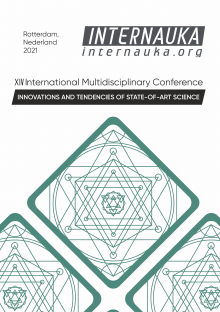PLURALISMS: ITALIAN RENAISSANCE TO FRANCE AND TO THE AMERICAS

PLURALISMS: ITALIAN RENAISSANCE TO FRANCE AND TO THE AMERICAS
Son Pulido Angie Lorena
student, Kennesaw state university Department of architectur United States of America,
USA, Georgia
Rojas Samper Mateo
student of the Institute of International Relations and World History (Lobachevsky University, UNN) Department of World Diplomacy and International Law,
Russia, Nizhny Novgorod
ИТАЛЬЯНСКИЙ РЕНЕССАНС ВО ФРАНЦИЮ И В АМЕРИКУ
Сoн Пулидо Энджи Лорена
студент, Государственный университет Кеннесо Факультет архитектуры,
США, г. Джорджия
Рохас Сампер Матео
студент четвертого курса, Институт международных отношений и мировой истории (Университет Лобачевского, ННГУ) Кафедра мировой дипломатии и международного права,
РФ, г. Нижний Новгород
АННОТАЦИЯ
В статье будет рассказано об итальянском возрождении и его влиянии не только на европейскую, но и на американскую архитектуру.
ABSTRACT
The article will talk about the Italian renaissance and its influence not only on European architecture but also on American architecture.
Ключевые слова: Архитектура, Ренессанс, Америка, Колониализм, Плюрализм.
Keywords: Architecture, Renaissance, America, Colonialism, Pluralism.
The concept of pluralism is important because it teaches us that architecture can be used as a bridge that connects a variety of cultures across different locations and time periods. To illustrate this idea, this essay will discuss how some architectural elements are taken from the Early Renaissance evolved at different locations and over time. More specifically, I will discuss how features of residential design from the Early Italian Renaissance were adapted in France and then, how some of those features were later exported to French colonized regions in the United States.
The Renaissance-style moved outside Italy and arrived in France at the end of the 15th century. This influence was the product of the conflict between these two points and it led to invasions by French armies to Italy. Subsequently, the Italian Renaissance style was imported to France (a place with a native Gothic style) by the nobility and aristocracy (Britannica, 2021) and it represented predominantly a secular (or non-religious culture, as the result of the intellectual movement of Renaissance humanism (Ching, 2017). Consequently, Chateau was the Revivalist architectural style that emerged and adapted to France some elements and principles of the Italian Renaissance. More specifically, designers of those Chateaus bring the idea of an Italian Villa to a space that used to be used for defense, and later it became a country residential space for the nobility. A well-known example that illustrates this adaptation of Renaissance architecture to France is the Chateau de Amboise in Loire Valley (1491-1498). This place of residence for French Kings was built on the site of a medieval castle while at the same time it started implementing Renaissance elegant features such as bays and pilasters. In fact, it was an Italian landscape architect the one that designed the first garden in France inspired by the Italian Renaissance Garden.

Figure 1. Wide bays a view of the Loire
Moreover, when studying colonialism, one can also clearly identify the complex phenomenon of pluralism and transculturation, the moment in which different cultural elements are merged and adapted. Indeed, the United States is a good example of the architectural influence that different European countries (such as Spain, France, Germany, the United Kingdom, etc.) had in the colonization of the Americas. For instance, the French Colonial homes style, which began in the mid-1600s, and arrived in the southeastern United States with the French colonists, is a clear example that relates and follows the lines of the influence that the Italian renaissance had on French residential design. In this case of coexistence, architects were making use of porches, pitched roofs, vaulted ceilings, structural symmetry, and French double doors (Masterclass, 2021) guided by vernacular architecture since they were using the materials and resources that were located closer to the site and that were more convenient for the humid climates of the area.

Figure 2. Parts in the USA where the architectural influence of European countries is present

Figure 3. French renaissance style house
It is important to note that the first instance of pluralism takes place in an area closer together since France is located closer to the origin of the Renaissance (Florence, Italy) whereas in the second case, architecture had to travel longer distances (across continents). Thus, by closely studying the elements that the designers decided to include or exclude, one can get a better understanding of the different local needs, conditions, practices, and traditions of the time.
References:
- Encyclopedia Britannica, inc. (2021). The Renaissance outside Italy. Encyclopædia Britannica, from https://www.britannica.com/art/Western-architecture/The-Renaissance-outside-Italy.
- Ching, F. D. K., Jarzombek, M., & Prakash, V. (2017). A global history of architecture.
- History Crunch. (2021). How did the ideas of the Renaissance spread?, from https://www.historycrunch.com/how-did-the-ideas-of-the-renaissance-spread.html#/.
- MasterClass. (2021). A guide to French colonial architecture, from https://www.masterclass.com/articles/french-colonial-architecture-guide#what-is-french-colonial-architecture.
